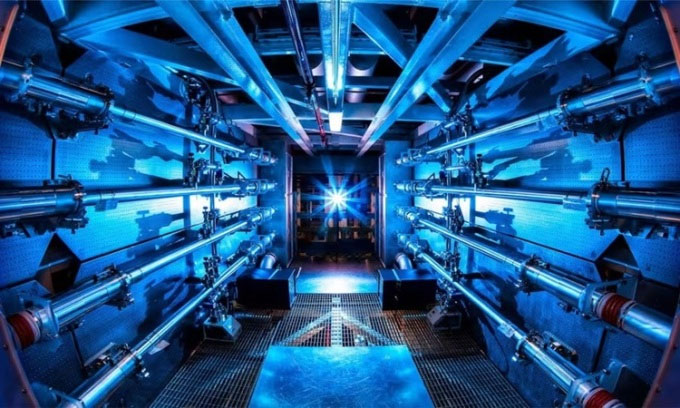100 MW power generation fusion reactor
Helical Fusion's spiral fusion reactor can operate stably for a long time with an initial power of about 50 - 100 MW.
Tokyo-based startup Helical Fusion is aiming to revolutionize electricity generation with a cleaner method that could provide unlimited energy. Helical Fusion plans to launch the world's first steady-state fusion reactor. They plan to develop a pilot reactor based on the torsion method , a magnetic confinement technique. The reactor, called HESTIA, will have an initial output of 50-100 MW, Interesting Engineering reported on August 31.

Helical Fusion will put the reactor into operation in 2034 and commercialize production in the 2040s. (Photo: Reuters).
Helical Fusion's reactor could be a type of stellarator called a heliotron , which consists of two continuously twisted cores that can operate without plasma flow. The company also wants to commercialize production after successfully developing the reactor. "We will create the first steady-state fusion reactor and produce electricity within the next 10 years ," said Takaya Taguchi, CEO of Helical Fusion.
Small-scale fusion reactors have the potential to serve as a local power source for factories such as steel or titanium smelters, remote islands or large ships. The power plant is estimated to cost around $5 billion to build. After more than a year of continuous operation, maintenance can be completed within three months to achieve an availability rate of more than 80%. Fusion of hydrogen isotopes such as deuterium and tritium using 1 gram of fuel produces the same amount of energy as burning 8 tons of oil, according to Helical Fusion.
Founded in 2021, Helical Fusion aims to install a commercial helical fusion reactor to provide electricity to communities. HESTIA, a deuterium-tritium fusion reactor that produces its own tritium using a liquid metal coating system, will play a key role in the company's pilot plant. Engineers use high-power electromagnetic waves at a specific frequency to heat the plasma, and without the need to conduct plasma current, HESTIA can operate at steady state for about a year.
In a helical fusion reactor, the magnetic field needed to confine the plasma is generated solely with electromagnetic coils. This allows for stable plasma confinement over long periods of time with a steady output, making it well suited for electricity generation.
However, Taguchi mentioned several challenges in implementing the plan, including difficulties in raising one trillion yen in funding to develop a pilot reactor, high-temperature superconducting technology for the coil, and establishing safety regulations to obtain local construction permits.
- Fusion reactor hits 100 million degrees Celsius
- Grid fusion synthesis power in 2050
- Japan inaugurated the world's largest fusion reactor
- Korea's fusion reactor is 7 times hotter than the Sun's core
- Pouring 1 billion yuan, China 'fired a laser' at the fusion empire of nearly 50 billion dollars
- Fusion power generation equipment reaches temperatures of 37 million degrees Celsius
- Successfully built Stellarator-type thermonuclear reactor
- Ambition to harness energy from fusion reactions
- The mystery of nuclear reactors
- The fusion reactor is 7 times hotter than the core of the Sun.
- Why are China and many countries racing to make artificial sun?
- China's 2 gigawatt commercial fusion reactor
 Norway built the world's tallest wooden tower
Norway built the world's tallest wooden tower Kremlin
Kremlin Ashurbanipal: The oldest royal library in the world
Ashurbanipal: The oldest royal library in the world Decoding the thousand-year construction of Qin Shihuang shocked the world
Decoding the thousand-year construction of Qin Shihuang shocked the world